Finalist, 2021 International Book Awards – Short Story
Underneath the Water with the Fish is a collection of short fiction that explores the murky underwater existence of women’s uncensored thoughts and desires. Often the women are on the cusp of change: death, leaving a relationship, starting a new one, wondering how they got to the point where they are. Sometimes they are living a rather marginal existence or are not well grounded in sound mental health and are just getting by. The author tells these stories with a touch of poetry and of humour and a great deal of emotional intelligence.
“At times heartbreaking, at times hilarious, these stories honour the everyday lives of people who struggle close to the ground. Women try desperately to love men who disappear, who die, who might not even exist, while bruises rise on their skin “like stones emerging from beneath a field.” Carol Malyon has created a world where “lily pads float on the water like flattened hearts.” At the same time, she not only makes her readers laugh when they think they shouldn’t but helps them forgive themselves for doing it.”
—K.D. Miller, author of Late Breaking
“Carol Malyon’s stories are funny, sad, and deeply ironic. In “Marking Time,” as their mother lies dying, her daughters finally want to hear her story. In “Smoke,” a woman trying to quit remembers old tobacco ads. In “Thanksgiving,” a family’s conversation over dinner will make you laugh out loud. These are women’s stories from birth to death that speak to all the pain, love, humour, loss, and acceptance that life holds. These are strong women who keep going in spite of the abuse, hardship, and unanswered questions their lives offer. These are women who survive.”
—Kristin Andrychuk, author of Mother’s Genius
powered by Crowdcast
Carol Malyon has worked as a nurse, and then in health research, before owning a bookstore and hosting a reading series in the Toronto’s beaches area. She has published the poetry collections, Headstand; Emma’s Dead; and Colville’s People; the short story collections, The Edge of the World and Lovers and Other Strangers; and the novels, If I Knew I’d Tell You; The Adultery Handbook; The Migration of Butterflies; and Cathedral Women; and a children’s picture book, Mixed-up Grandmas. She and bill bissett co-authored Griddle Talk, a year of conversations at the Golden Griddle, where they discussed “love and life and anything else you want.” She is based in Toronto, but has led short story workshops in the Maritimes and North Bay, and has been writer-in-residence at the University of New Brunswick. www.carolmalyon.com
The Keel Hides Underneath the Water with the Fish
The sailboat is where Sandra chooses to begin.
Once upon a time there was a man, there was a woman. They went sailing. A storm came out of nowhere, so it took them longer to get to shore than they had expected. The woman had a date with someone else that evening. She was late. Perhaps this was the beginning of the end of that relationship. Later she married the man who had taken her sailing.
Sandra’s mother and father are dead now and Sandra is the only proof that they existed. This is the task of children, she thinks. While they live they bear witness; they provide proof. Sandra is childless. When she dies she will erase their existence, as well as her own.
Once upon a time a man invited a woman to go sailing. He knew what he was doing. She had to be home by a certain time, but he pretended to have trouble getting back to shore. She was late for her date. Finally she married the man with the sailboat. Later he was unhappy but had only himself to blame.
Sandra’s parents are dead, and the ancestors who begat them. Sandra imagines a family Bible with a long listing of begats. It ends with Sandra who has control. She can change their stories to her own purpose. Everyone does this.
Once upon a time a woman went sailing with another man to make her boyfriend jealous. Perhaps she was trying to prod her boyfriend into proposing or breaking up. Perhaps she liked both men, or only one of them, or neither. Or perhaps she simply wanted to go sailing, and accepted whoever asked her first. These things may be true, or they may not be: a woman wanted to miss her date, a man wanted her to miss it.
Sandra owns her parents now, and owns their stories. She can tell them in ways that favour her father or her mother, or favour neither. No one will contradict her. Perhaps Sandra will be kind to them, and make them beautiful and innocent, young dreamers drifting toward love.
But Sandra has memories that are difficult to erase.
When Grandma comes to visit, she and Sandra’s mother look at albums of faded photographs. The women sit at the kitchen table all afternoon. They pour tea from a chipped enamel teapot, and they talk about the old days when Sandra’s mother attracted all the boys like bees to honey and Grandma invited the boyfriends to stay for supper.
“Remember Billy Gladstone?” says Sandra’s mother.
“Was he the one who played rugby?” Grandma asks. “The one with a sister named Shirley who married one of the Baker boys on Beech Street? I think the other Baker boy worked at the bank.”
When Grandma has fastened Billy Gladstone in her memory, when she knows which street he lived on and where he went to church, when she remembers that he’s the nephew of Mrs. Watson in her chapter of Eastern Star, then the story can get started.
All these stories start out the same. Men fall in love with Sandra’s mother who sits on a wicker rocking chair and ignores them. She wears a straight dress with ruffles along the hem. Her hair is bobbed, and shaped in perfect Marcel waves. Men flock around her; they hang around her house hoping to be invited to stay for supper.
All the stories have the same ending. Sandra’s mother smokes a cigarette and stares out the kitchen window and wonders what life would be like if she had married Billy Gladstone or Joey Wilson or Chuck McDonald.
“But I wouldn’t be here,” Sandra reminds her. These are either the first words she has spoken, or else the first words her mother and grandmother have noticed.
Her mother looks at Sandra strangely, as though she wonders who Sandra is, then finally remembers. “Of course you’d be here. You’d just have a different dad.”
Sandra knows this isn’t true. She looks like her father and has his temper. Everyone says so. She would be different inside and out if she had a different father.
“I don’t want a different dad,” she says.
Then Sandra’s mother gets fed up and tells her to stop being so silly; they were just talking and having a bit of fun. And anyway, can’t she have a conversation with her own mother without Sandra butting in.
“In my day,” says Grandma, “children were seen and not heard.” Grandma always talks this way: “Little pitchers have big ears.” “Spare the rod and spoil the child.”
“For one thing,” says Grandma, “I’d do something about the way she walks. Stand up straight,” she tells Sandra. “Don’t slouch. Pull back those shoulders.”
Sometimes Grandma marches in a parade with other ladies from Eastern Star. She looks straight ahead and pretends she can’t see Sandra watching from the sidewalk. Sandra stares at those Eastern Stars. They wear white dresses, and are old and fat and ugly. After they pass by Sandra falls in behind them and imitates the way they march. She follows them all the way to the park by Ashton Bay where they disband. She watches the Eastern Stars pull out their white lace handkerchiefs and wipe the sweat off their red faces.
Those Eastern Stars are dead now, and Ashton Bay has disappeared. Another bay with the same name has replaced it. The new bay doesn’t stink because a sewage plant has been built beside it. Sailboats are moored in a marina in neat rows. The wooden walkways seem brand-new, as though they are replaced every year instead of growing old.
Sandra walks on an old wharf in her childhood. It is made of huge squared timbers that are greenish-black and slippery. The black colour could be from age or weather or from the same preservative that’s used on telephone poles and railway ties. Water is choppy, and slops over the dock. Green algae grows inside crevices and all along the edges of every piece of wood. The catwalk boards are rotten. Pieces are missing, and the boards feel spongy beneath Sandra’s feet. This is part of the adventure for Sandra who goes sailing with her father every chance she gets.
Each fall the sailboats are brought ashore and propped up on tall racks for the winter. The decks are high above Sandra’s head, and tall keels curve beneath them like fins of giant fish.
When Sandra sees sailboats on the lake she thinks about the keels hidden beneath the water. Some of the children in the schoolyard don’t believe in their existence. They think the part they see above the water is all there is. For once Sandra knows an extra piece of truth. From the corner of the schoolyard she studies the different shadings of the lake.
Sandra plays in her bedroom so she won’t mess up the house that’s clean for bridge club. She makes up stories about her paper dolls; the Shirley Temple doll is named Sandra.
Once upon a time a man and a woman fell in love. They knew they would be perfect for each other and so they married. They thought that they were happy and didn’t know something was missing. But then they had a baby and life was perfect. The family kept pictures in an album. The couple with their arms around each other’s waist. The woman cradling the baby in her arms. The man holding the baby on his knee. All three of them together. You can see smiles on all their faces and know how happy they always were.
This is the story. It starts out once upon a time. Other details could be included. The family lived in a white frame house. A maple tree shaded the back garden. Petunias bloomed in flower boxes beneath each window. In winter they sat by the fireplace; they made popcorn and drank hot chocolate. They played checkers and listened to music.
Sandra tells this story to people that she meets. This is the way mythology was passed on among the ancients, before there was a way to write things down.

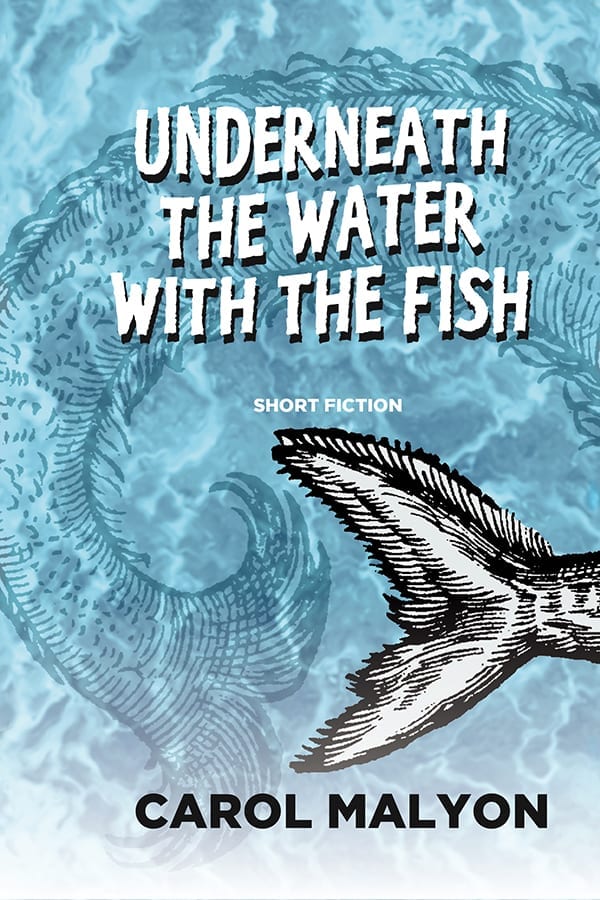


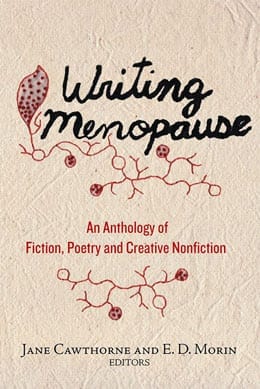
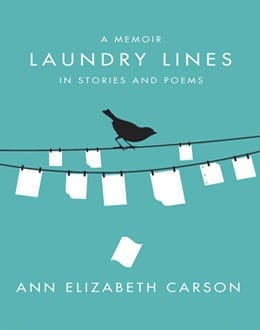
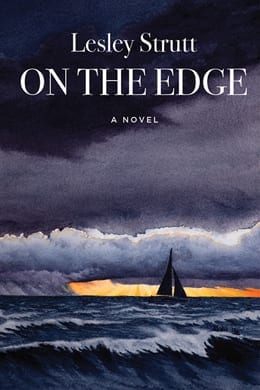
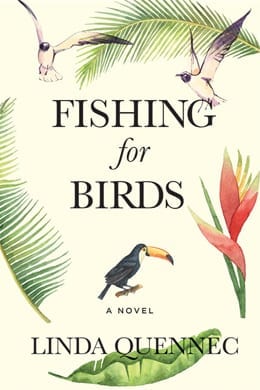
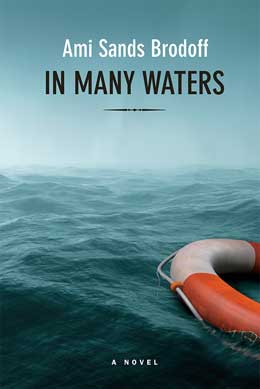
Inanna Admin –
Underneath the Water with the Fish by Carol Malyon
reviewed by The Minerva Reader – November 2020
https://theminervareader.com/
A great range of stories in this collection. We are all drawn beneath the waterline to bear witness to the tiny and profound moments of our lives. Pithy, succinct, insightful, disturbing, thought-provoking and utterly hilarious!
Lesley Strutt –
I enjoyed this collection of short stories and prose pieces so much! Written by a skilled craftswoman, the stories pose questions that probe our understanding of our power as women. Definitely a feminist read, some of the stories explore how and why women stay in abusive relationships, while others interrogate the essence of who we are when we’re not pleasing others, or trying to placate, or doing what we’re “supposed to do”. And then there are the women who themselves abuse their power. It is a kaleidoscope of tales, well worth reading. Poignant and yet empowering. And always questioning – does it have to be this way.